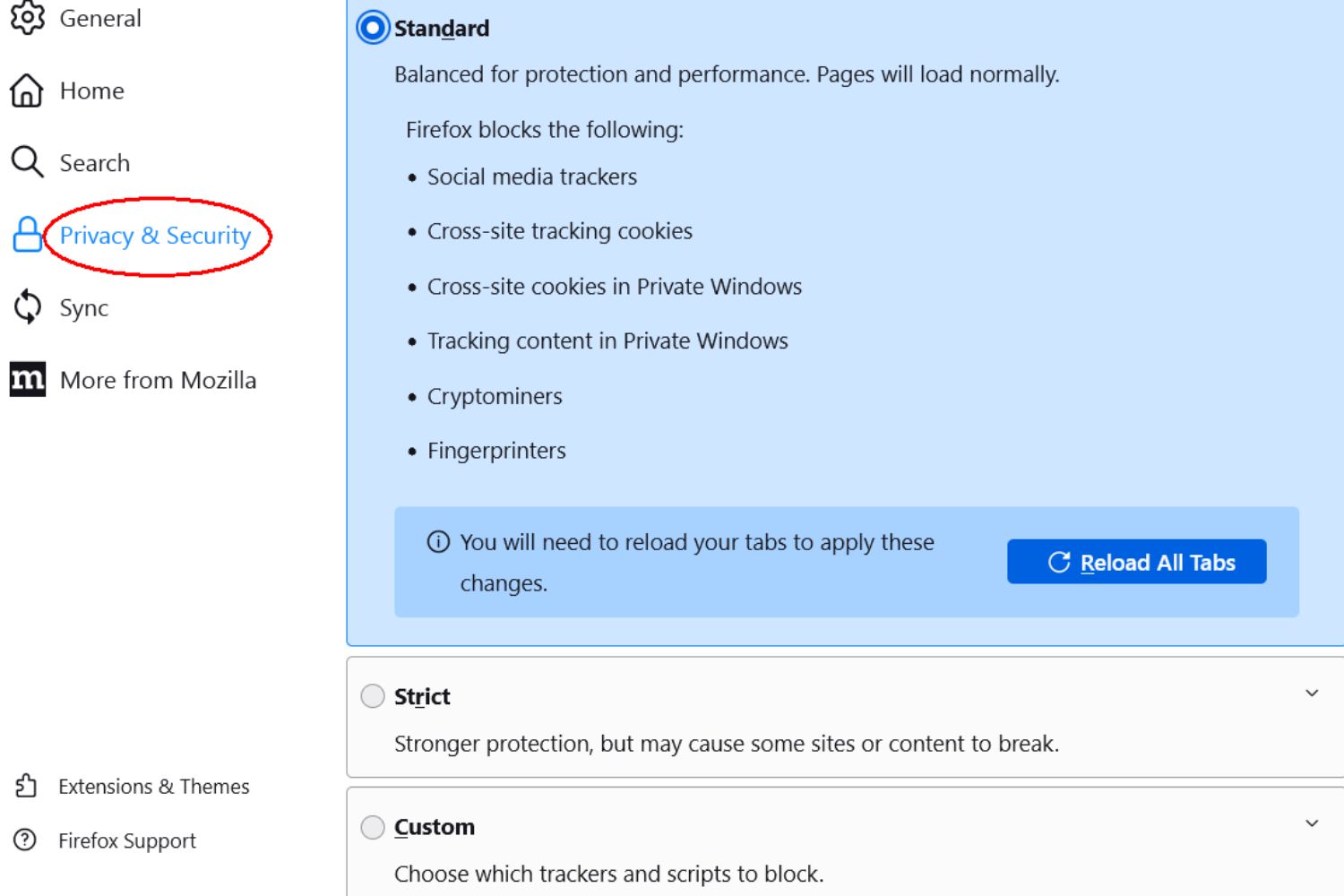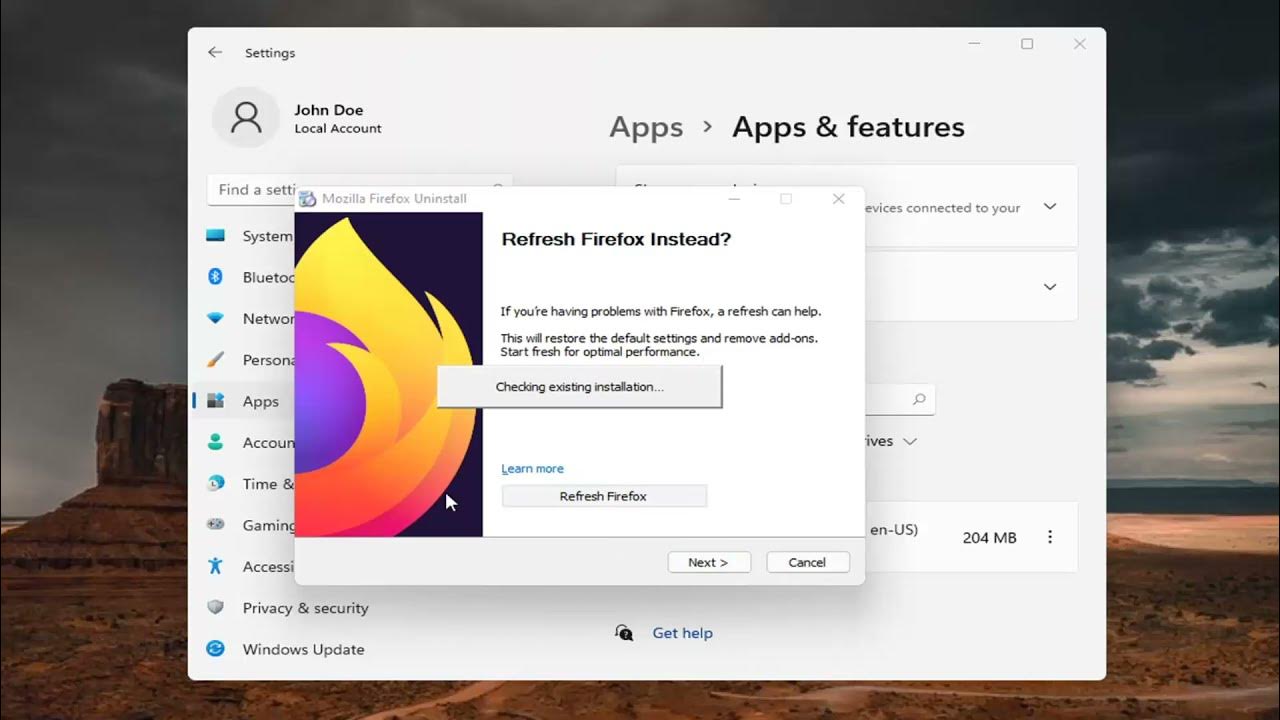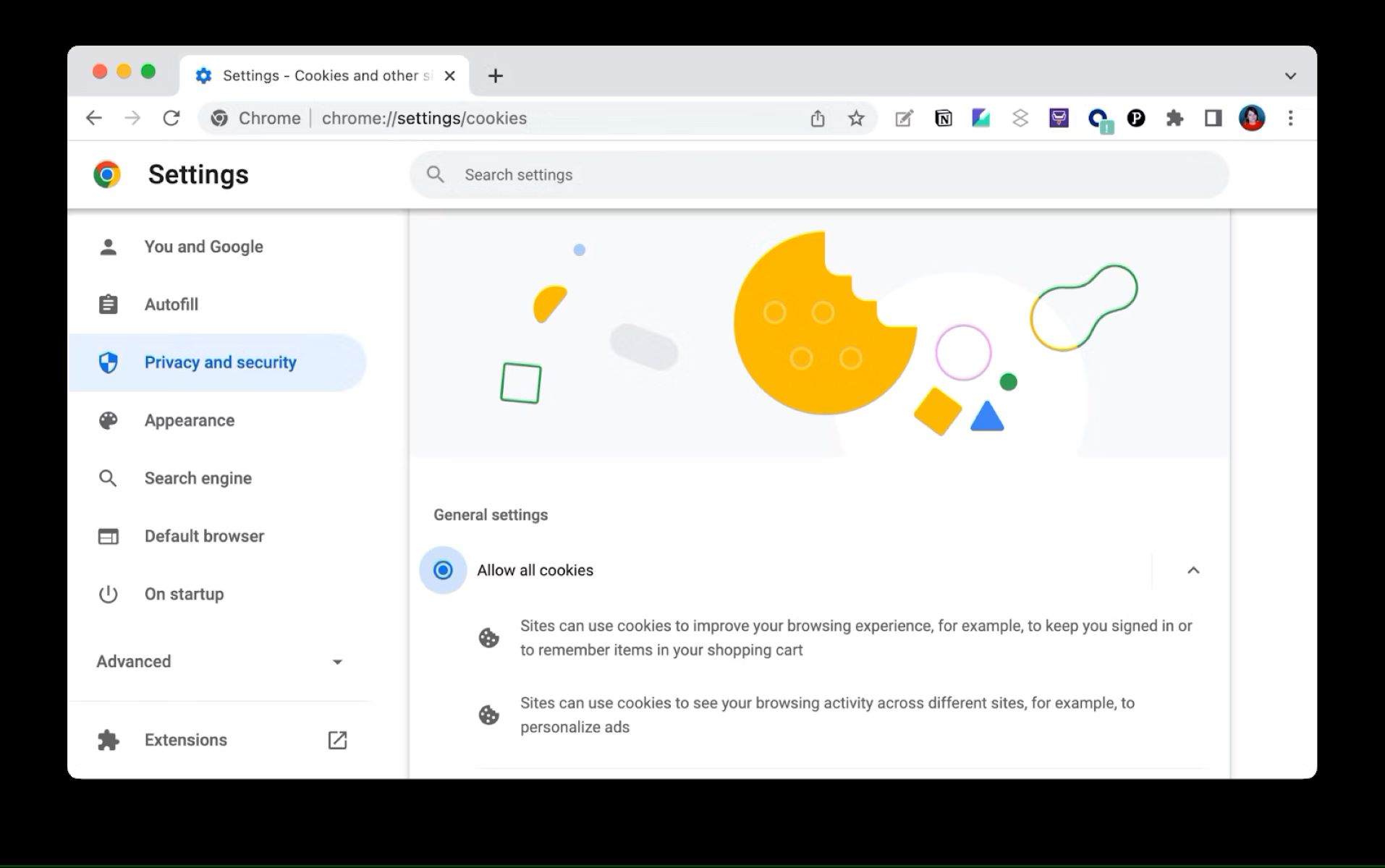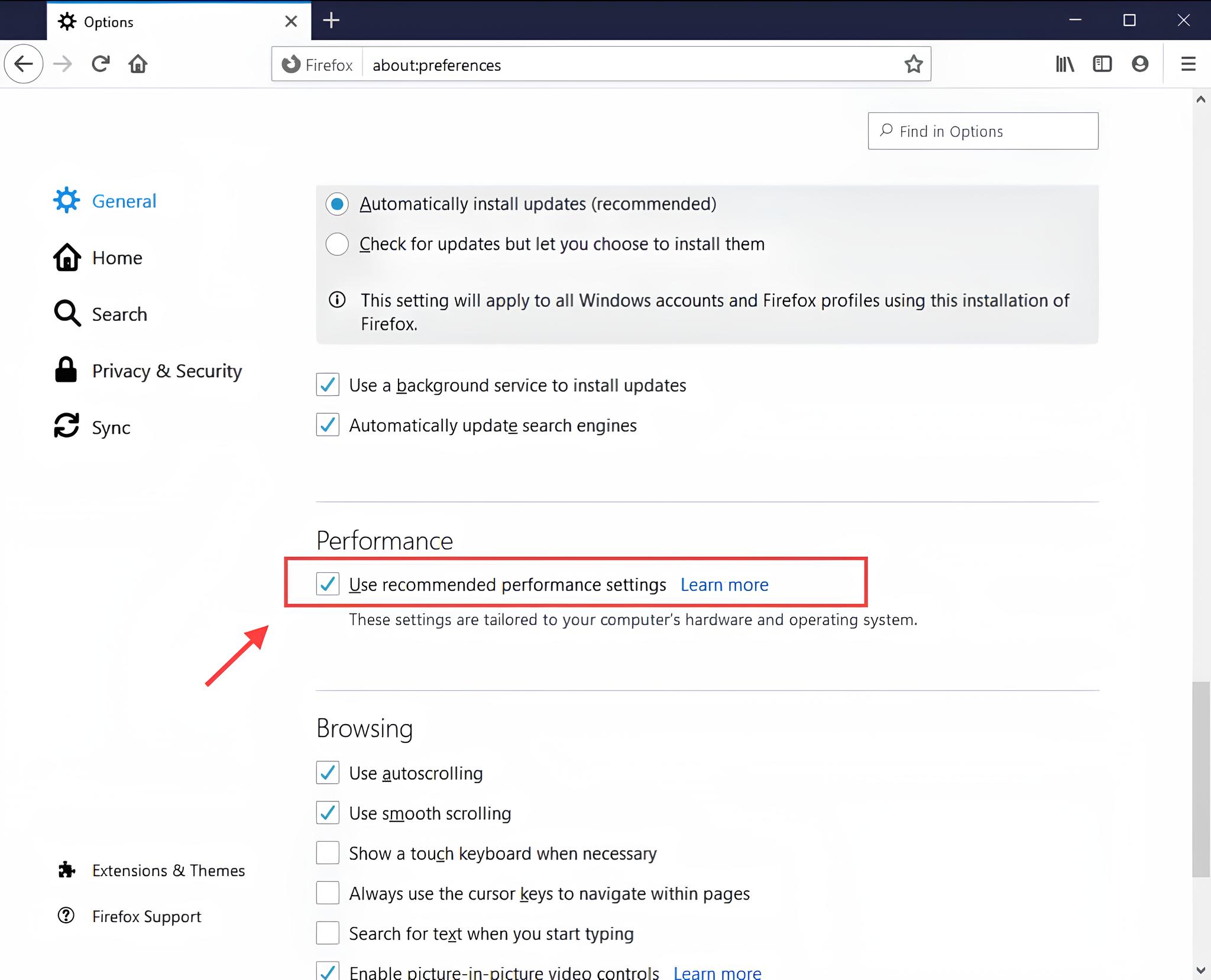Introduction
When it comes to browsing the web, privacy and security are paramount. One of the key elements that can impact your online privacy is cookies. These small pieces of data are stored on your computer by websites you visit and can be used to track your online activities. While cookies can enhance your browsing experience by remembering your preferences and login information, they also raise concerns about privacy and data tracking.
Firefox, one of the most popular web browsers, provides users with the flexibility to manage their privacy settings, including the option to disable cookies. By taking control of your cookie settings in Firefox, you can mitigate the risk of being tracked by third-party websites and protect your personal information.
In this guide, we will walk you through the step-by-step process of disabling cookies in Firefox. Whether you're concerned about targeted advertising, data tracking, or simply want to enhance your online privacy, understanding how to manage cookies in Firefox is a crucial skill for anyone who values their digital security. Let's dive into the details and empower you to take control of your online privacy.
Step 1: Open Firefox
To begin the process of disabling cookies in Firefox, the first step is to open the browser. If Firefox is not already installed on your computer, you can easily download and install it from the official Mozilla website or through your operating system's app store.
Once Firefox is installed, you can launch the browser by locating its icon on your desktop, taskbar, or in the applications folder on your computer. Simply double-click on the Firefox icon to open the browser.
Alternatively, if Firefox is set as your default browser, you can open it by clicking on any web link or by searching for it in your computer's search bar or start menu. Upon launching Firefox, the browser window will open, presenting you with the familiar interface that allows you to navigate the web, manage bookmarks, and access various settings and features.
If you are using a mobile device such as a smartphone or tablet, you can open Firefox by tapping on its icon on the home screen or in the app drawer. Once launched, Firefox for mobile offers a user-friendly interface optimized for touch interactions, providing a seamless browsing experience on smaller screens.
Regardless of the device you are using, opening Firefox is the initial step in the process of managing your privacy settings, including the configuration of cookie preferences. With Firefox up and running, you are ready to proceed to the next steps in customizing your cookie settings to align with your privacy preferences.
By familiarizing yourself with the process of opening Firefox, you have taken the first step towards gaining control over your online privacy. With the browser at your fingertips, you are now prepared to delve into the settings and make informed decisions about managing cookies and enhancing your digital security.
Step 2: Access the Settings
Accessing the settings in Firefox is the gateway to customizing your browsing experience, including managing privacy and security preferences such as cookie settings. Whether you are using Firefox on a desktop computer, laptop, or mobile device, the process of accessing the settings remains consistent, allowing you to seamlessly navigate to the desired configuration options.
On a desktop or laptop computer, the settings menu in Firefox is easily accessible through the main menu located in the upper-right corner of the browser window. It is represented by three horizontal lines, often referred to as the "hamburger menu" due to its appearance. Clicking on this menu icon opens a dropdown list of options, including "Preferences" or "Options," depending on your operating system.
Upon selecting "Preferences" or "Options," a new tab or window will open, presenting you with a comprehensive array of settings and customization options for Firefox. This interface is designed to be user-friendly, allowing you to navigate through different categories of settings, ranging from general preferences to advanced configurations related to privacy, security, and browsing behavior.
If you are using Firefox on a mobile device, accessing the settings is similarly straightforward. In the mobile browser interface, the settings menu is typically located behind the same three-line icon, often positioned in the lower-right corner of the screen. Tapping on this icon reveals a menu where you can find the "Settings" option, leading you to a dedicated settings screen tailored for mobile browsing.
Once you have accessed the settings in Firefox, you are presented with a wealth of options to tailor your browsing experience according to your preferences. From customizing the browser's appearance to managing privacy and security features, the settings menu serves as a central hub for fine-tuning Firefox to align with your individual needs and priorities.
By successfully navigating to the settings in Firefox, you have laid the groundwork for taking control of your online privacy and security. With the settings menu at your disposal, you are now poised to delve into the specific privacy and security configurations, including the management of cookies, as we proceed to the next steps in this guide.
Step 3: Go to Privacy & Security
Navigating to the "Privacy & Security" section in Firefox is a pivotal step in customizing your browser's settings to align with your privacy preferences. This section serves as a comprehensive hub for managing various aspects of your online privacy and security, including the configuration of cookie settings.
Upon accessing the settings menu in Firefox, you will encounter a list of categories on the left-hand side of the screen, allowing you to effortlessly navigate through different sections. Among these categories, you will find "Privacy & Security," which is prominently positioned to emphasize its significance in empowering users to control their online privacy.
Clicking on the "Privacy & Security" category opens a wealth of options and configurations that enable you to fine-tune your browsing experience. Within this section, you will find a range of privacy-related settings, such as tracking protection, permissions, and security protocols, all designed to enhance your digital security and safeguard your personal information.
One of the key components within the "Privacy & Security" section is the management of cookies. By selecting the "Cookies and Site Data" option, you gain access to granular controls that allow you to dictate how Firefox handles cookies from websites you visit. This level of customization empowers you to make informed decisions about the storage and usage of cookies, thereby influencing your online privacy and browsing behavior.
In the "Cookies and Site Data" settings, you can choose to block all cookies, thereby preventing websites from storing any data on your computer. Alternatively, you have the option to allow cookies only for the duration of your browsing session, ensuring that they are automatically deleted once you close the browser. Additionally, Firefox provides the flexibility to manage exceptions, allowing you to specify individual websites for which you want to enable or disable cookie usage.
By navigating to the "Privacy & Security" section and delving into the "Cookies and Site Data" settings, you are equipped with the tools to tailor your cookie preferences according to your privacy requirements. This level of control empowers you to mitigate the risks associated with indiscriminate cookie usage, thereby enhancing your online privacy and security within the Firefox browser.
With the ability to navigate to the "Privacy & Security" section and access the granular cookie settings, you are well-positioned to take charge of your online privacy within the Firefox browser. This step marks a significant milestone in your journey to customize your browsing experience and fortify your digital security.
Step 4: Choose Custom Settings
When it comes to managing your online privacy and security, having the ability to customize settings according to your specific preferences is invaluable. In Firefox, the option to choose custom settings within the "Cookies and Site Data" section empowers you to fine-tune your cookie preferences with precision, aligning them with your individual privacy requirements.
Upon navigating to the "Cookies and Site Data" settings in Firefox, you will encounter the option to choose custom settings, presenting you with a range of configurable parameters that allow you to exert granular control over how cookies are handled within the browser.
The custom settings interface provides a nuanced approach to managing cookies, offering options to block third-party cookies, prevent tracking, and manage cookie storage duration. By enabling the custom settings, you can dictate whether websites are allowed to set cookies, including those used for tracking and advertising purposes, thereby influencing the extent to which your online activities are monitored.
Furthermore, the custom settings in Firefox enable you to specify exceptions, granting you the flexibility to define individual websites for which you want to enforce unique cookie handling rules. This level of customization empowers you to tailor your cookie preferences on a per-site basis, ensuring that your privacy choices are applied selectively, based on your trust in specific websites.
In addition to controlling cookie behavior, the custom settings interface in Firefox allows you to manage site data, including cached web content and stored information from visited websites. This comprehensive approach to data management affords you the ability to clear site data, thereby erasing stored information and enhancing your privacy by minimizing the footprint of your online activities.
By choosing custom settings within the "Cookies and Site Data" section, you are equipped with the tools to assert precise control over how cookies and site data are handled within the Firefox browser. This level of customization empowers you to align your privacy preferences with your browsing habits, ensuring that your online activities are conducted in a manner that reflects your individual values and priorities.
With the ability to leverage custom settings, you are well-positioned to fortify your online privacy and security within the Firefox browser, thereby enhancing your digital experience and mitigating the risks associated with indiscriminate cookie usage. This step marks a significant milestone in your journey to tailor your browsing experience according to your unique privacy requirements.
Step 5: Disable Cookies
Disabling cookies in Firefox is a proactive step towards bolstering your online privacy and taking control of your digital footprint. By opting to disable cookies, you can mitigate the risks associated with data tracking, targeted advertising, and potential privacy infringements, thereby fostering a more secure and personalized browsing experience.
To disable cookies in Firefox, you can navigate to the "Cookies and Site Data" settings within the "Privacy & Security" section. Within this interface, you will find the option to block all cookies, effectively preventing websites from storing any data on your computer. This blanket approach to disabling cookies ensures that no website can utilize cookies to track your online activities or store information about your browsing behavior.
Alternatively, if you prefer a more nuanced approach to cookie management, Firefox offers the flexibility to allow cookies only for the duration of your browsing session. This means that cookies are automatically deleted once you close the browser, minimizing their impact on your privacy while still allowing for a seamless browsing experience during your active sessions.
Furthermore, Firefox empowers users to manage exceptions, enabling you to specify individual websites for which you want to enable or disable cookie usage. This level of customization allows you to tailor your cookie preferences based on your trust in specific websites, ensuring that your privacy choices are applied selectively according to your preferences and browsing habits.
By disabling cookies in Firefox, you assert greater control over your online privacy, reducing the likelihood of being tracked across websites and minimizing the intrusion of targeted advertising. This proactive approach aligns with the evolving landscape of digital privacy, where individuals seek to safeguard their personal information and assert their autonomy in the online sphere.
In addition to disabling cookies, Firefox provides users with the ability to clear site data, including cached web content and stored information from visited websites. This comprehensive approach to data management allows you to erase stored information, further enhancing your privacy by minimizing the residual footprint of your online activities.
By embracing the option to disable cookies and leveraging the comprehensive privacy and security features offered by Firefox, you are empowered to curate a browsing environment that reflects your individual privacy preferences and values. This proactive stance towards managing cookies aligns with the ethos of digital empowerment, where users are encouraged to take charge of their online privacy and shape their digital experiences according to their unique needs and priorities.

























